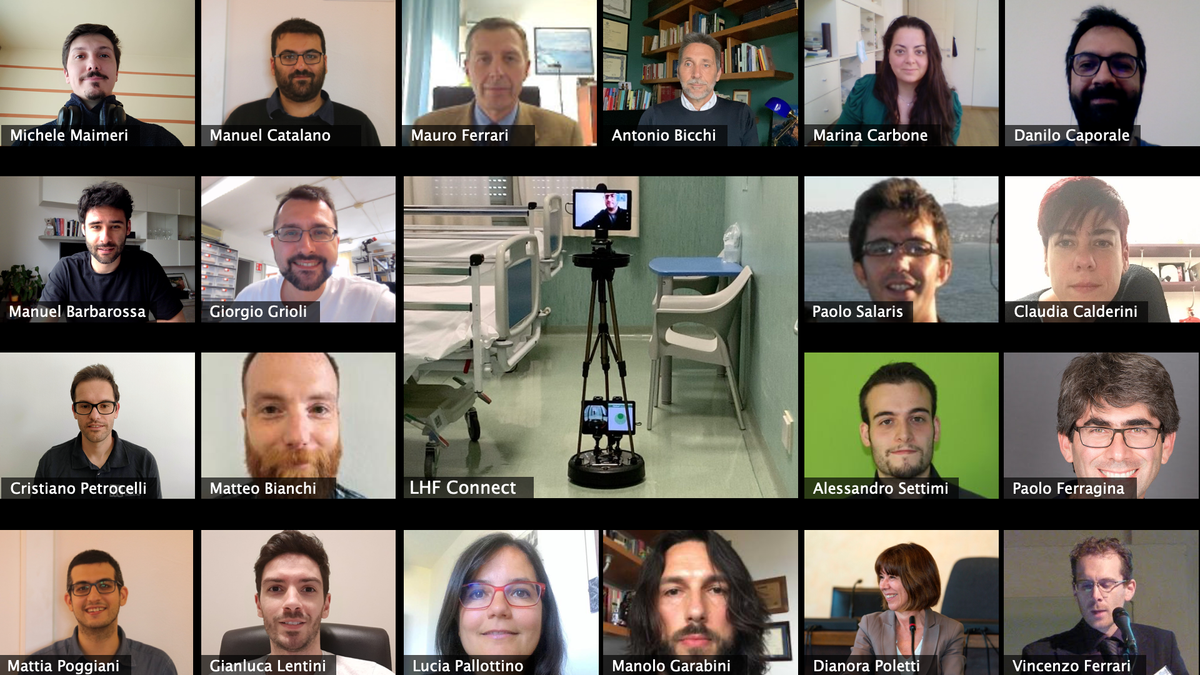THE INSTITUTE Hospitalized COVID-19 patients are often left to battle the virus alone to help stop the spread of the virus to their family and friends. To assist with this difficult situation, IEEE Fellow Antonio Bicchi, a member of an Italian research team called Low-Hanging Fruits, has developed a robot called LHF-Connect. Bicchi is a robotics professor at the University of Pisa as well as a senior scientist at the Italian Institute of Technology, also in Pisa.
LHF was launched under the TechForCare initiative, a collaboration between the Italian Institute for Robotics and Intelligent Machines and Maker Faire Rome, an organization that holds events for inventors. The TechForCare initiative brings together academic and industry engineering experts to develop technology that could help combat COVID-19.
The Institute asked Bicchi about the project.
This interview has been edited and condensed for clarity.
What problem are you trying to solve?
Patients are not allowed to see their families while they are being treated in the hospital so we developed an open source and affordable robot that anyone can build.
What technologies are you using?
The robot uses commercially available parts such as a pedestal and a base, which is a modified version of the Roomba robotic vacuum cleaner. The pedestal is where up to two mobile devices, such as a smartphone or tablet, can be placed.
The robot costs about US $1,086 to build.
The software that allows the operator to control the robot remotely was developed by engineers from the Italian Institute of Technology and the University of Pisa. iRobot, which makes Roomba, granted our project free access to its software libraries. The team was able to modify the software, making it possible to control LHF-Connect’s movements.
Explain how your project works.
The hospital’s administrative staff helps patients schedule when they want to make a call to their families or friends. At the appointed time, a human operator—who is located away from the patient—uses a computer to drive LHF-Connect to the patient’s bedside. Using three-way calling, the robot’s operator calls the family member or friend using the mobile device, which is located on the pedestal. The operator steps out of the control room while the patient is speaking with his family to give them privacy.
What challenges have you faced, and how did you overcome them?
Designing a robot that is easy and affordable to build in a short period of time. Currently, five LHF-Connect robots have been built by other engineers around the world.
Unreliable Wi-Fi connectivity inside hospitals was another challenge so we had to develop very robust communication protocols. While the robot travels across the hospital, it switches from access point to access point.
What is the potential impact of the technology?
It also can be used to carry out remote consultations with medical professionals via mobile devices to help stop the spread of disease.
In addition, LHF-Connect has the potential to be used for telemedicine for other medical conditions.
How close are you to the final product?
The robot is being used at several hospitals and medical facilities in Italy. They include the University of Pisa’s hospital, Azienda Ospedaliero-Universitaria Pisana; the intensive care units at the hospitals in Massa and Carrara; and the Azienda Speciale Asfarm Retirement and Assisted Living Facility in Induno Olona.
We are currently upgrading the software and giving the robot the ability to physically interact with the environment. For example, the robot currently doesn’t have arms to open doors therefore, if a door is closed, a nurse has to open it for the robot to pass through.
How many people are involved, and how many IEEE members are involved?
The core technical group consists of 18 people who are affiliated with the Italian Institute of Technology or with the University of Pisa. Many of them are members of the IEEE Robotics and Automation Society.
Attention IEEE members: are you part of a team responding to the COVID-19 crisis? We want to hear from you! Wherever you are and whatever you are doing, if you are helping deal with the outbreak in some way, let us know. Send us accounts of anywhere from 200 to 800 words, or simply give us a rough idea of what you are doing and your contact information. Write to:k.pretz@ieee.org



